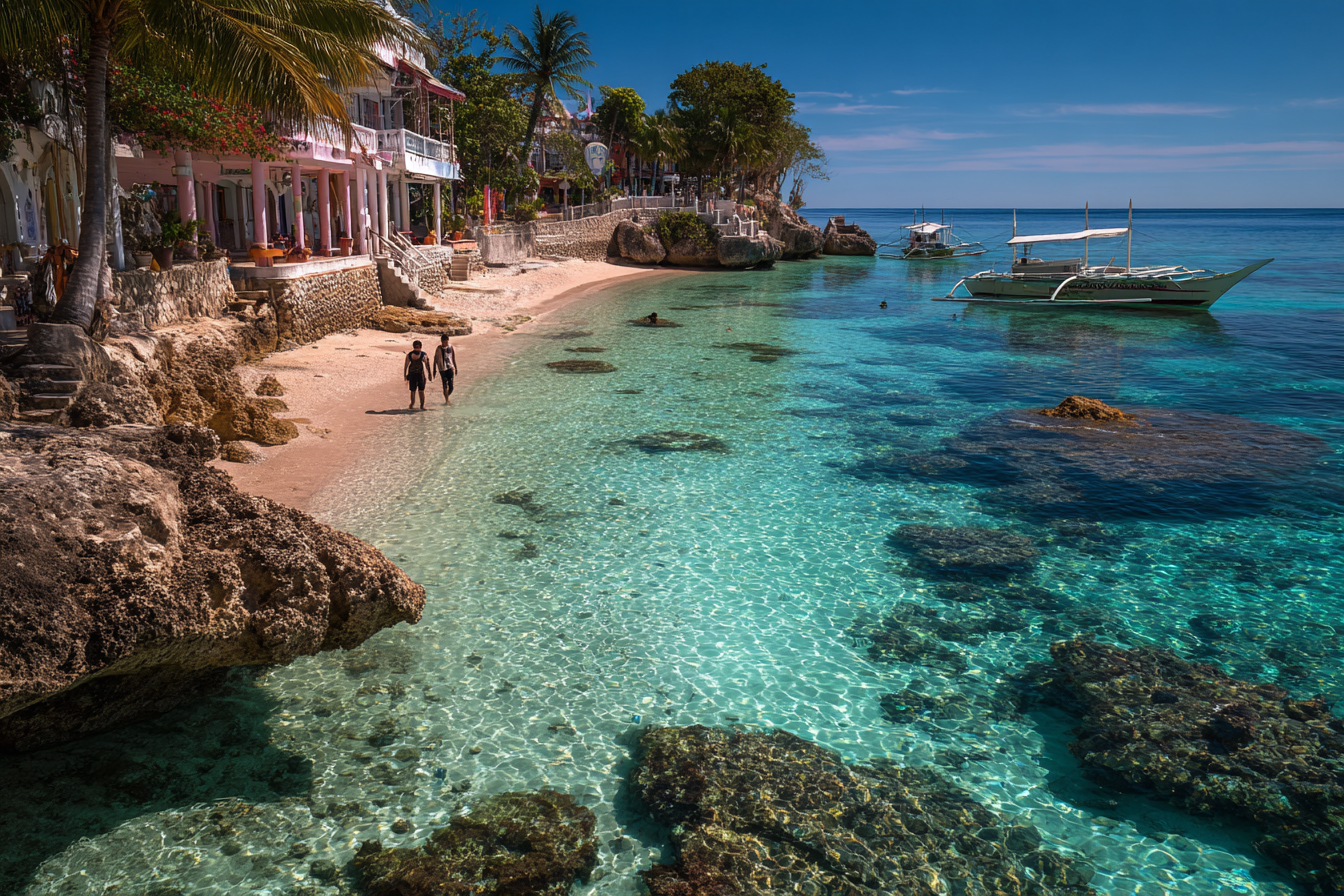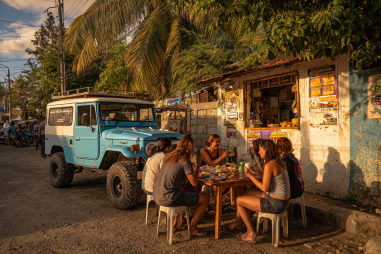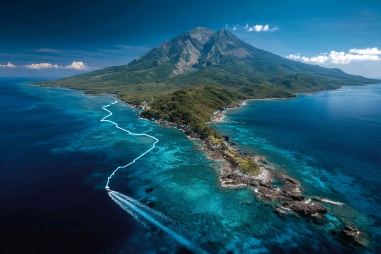Oslob, a charming town in the southern part of Cebu, Philippines, has gained worldwide fame as a prime spot for swimming with the gentle whale sharks and discovering some of the most breathtaking natural attractions. However, timing your visit to this tropical paradise can greatly enhance your experience. Understanding the local weather patterns, knowing the best time to see whale sharks, and preparing yourself for the seasonal changes are all key to enjoying a smooth and memorable trip. Whether you’re planning beach escapades, diving sessions, or cultural explorations, this guide will help you navigate Oslob’s weather and pick the perfect time to visit.
Climate Overview and Seasonal Patterns in Oslob
Oslob experiences a tropical climate that’s generally warm and humid throughout the year. Like much of the Philippines, it has two main seasons: the dry season and the wet season. The dry season typically runs from November to May, bringing sunny skies, lower humidity, and less rainfall. This is often regarded as the best time for outdoor activities and water-based adventures.
The wet season usually begins in June and lasts until October. During these months, there is more frequent rain, occasional thunderstorms, and an increased risk of typhoons, especially from July to September. Despite the rain, temperatures remain relatively warm, averaging around 26-32°C (79-90°F), but the weather can feel hotter due to the high humidity.
Oslob’s weather is influenced by the northeast monsoon (Amihan) in the dry season, which brings cooler breezes, and the southwest monsoon (Habagat) during the wet season, which can bring heavy rains and rough seas.
Best Months for Whale Shark Watching and Other Outdoor Activities
Whale shark watching in Oslob is the town’s biggest draw, and timing your visit right can mean the difference between an unforgettable encounter and a missed opportunity. The best months for whale shark sightings are generally during the dry season, from November to May. This period offers calm seas and good visibility, allowing snorkelers and divers to safely and comfortably observe these majestic creatures early in the morning.
Aside from whale sharks, other popular outdoor activities such as tumalog falls trekking, visiting the beautiful Sumilon Island, and exploring the nearby beaches thrive during the drier months. The consistent weather ensures trails are accessible, boats run smoothly, and the sun enhances the vibrant colors of nature.
If you’re keen on diving, April to June offers warmer waters and excellent visibility, ideal for underwater photographers and marine life enthusiasts.
Risks of Rainy or Typhoon Seasons
Visiting Oslob during the wet season comes with some challenges. The months from June to October experience more rainfall, which can sometimes be heavy and persistent. The increased precipitation can cause muddy trails, disrupt boat trips, and limit visibility for whale shark watching due to rough waters.
One of the main concerns during this period is the possibility of typhoons, which often affect the Visayas region from July to September. Typhoons can bring dangerous weather conditions, including strong winds, flooding, and suspension of transportation and tours. While Oslob is less prone to direct typhoon hits compared to other areas, it’s always best to monitor weather updates closely if you plan to travel during these months.
Packing Tips Based on Weather Conditions
What you pack for your Oslob adventure depends greatly on when you go. For the dry season:
- Light, breathable clothing made from cotton or linen to stay cool in warm temperatures.
- Swimwear for whale shark watching and beach activities.
- Sunscreen, sunglasses, and a broad-brimmed hat to protect yourself from strong sun rays.
- Waterproof bags or cases for your gadgets, especially if you plan on spending time on boats.
During the wet season, it’s wise to bring:
- A reliable rain jacket or poncho to stay dry during sudden showers.
- Lightweight waterproof shoes or sandals for trekking slippery paths.
- Quick-dry clothing to handle damp conditions comfortably.
- An umbrella, although it may be less practical in windy storms.
Year-round, insect repellent is recommended due to the presence of mosquitoes, especially near water and forested areas.
How Weather Affects Transportation and Tours
Oslob’s accessibility and the availability of tours are closely tied to the weather conditions. The dry season generally allows for smooth travel by land and sea. Jeepneys, buses, and private vehicles can navigate roads with ease, and boat operators frequently run trips to whale shark sites and nearby islands.
In contrast, the wet season may bring delays or cancellations. Heavy rain can lead to slippery roads and occasional flooding, making land travel unpredictable. Sea conditions also tend to be rough, which can halt boat tours or make whale shark watching unsafe. Many tour operators suspend trips during inclement weather to ensure safety.
If you decide to visit during the rainy months, it’s best to have flexible plans and maintain contact with your tour providers for real-time updates.
Recommendations for Off-Peak Travel
Traveling to Oslob during off-peak seasons, such as the rainy months, can offer some benefits if you’re prepared. The area is less crowded, meaning more peaceful encounters with nature and less competition for accommodations. Prices for hotels and tours often drop as well, making a more budget-friendly experience.
However, if you visit in the off-peak season, be ready for more unpredictable weather and limited activity options. Planning alternative indoor or cultural activities can help fill in gaps when outdoor adventures are curtailed by rain.
In essence, while the drier months are prime for optimal conditions, off-peak travelers are rewarded with tranquility and more personalized experiences, provided they stay adaptable.
Planning Around Local Festivals and Events
In addition to natural beauty, Oslob boasts vibrant local culture, showcased through festivals and events that can enrich your visit. One of the most notable is the annual “Sinulog sa Oslob,” a colorful festival held every January in honor of the Santo Niño (Child Jesus), featuring street dancing, parades, and religious ceremonies.
Visiting during such festive times can add a unique cultural dimension to your trip. The dry season, particularly from January to February, is ideal for combining whale shark watching with festival experiences. Just keep in mind that festivals can attract more visitors, so early bookings for accommodations are recommended.
Other smaller local celebrations occur throughout the year, each offering authentic glimpses into the daily life and traditions of Oslob’s friendly community.
Timing your visit to Oslob by understanding its weather patterns and seasonal nuances ensures you make the most of what this captivating destination has to offer. Whether you chase whale sharks in shimmering waters, hike to cascading waterfalls, or immerse yourself in lively cultural festivals, careful planning around weather and events promises an unforgettable adventure in this tropical haven.







